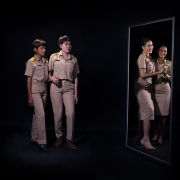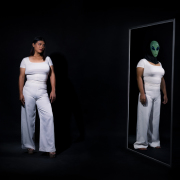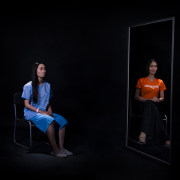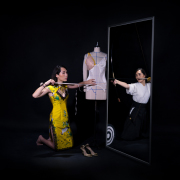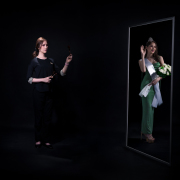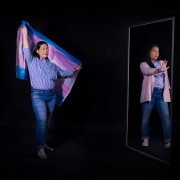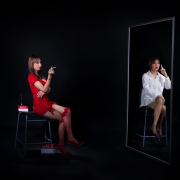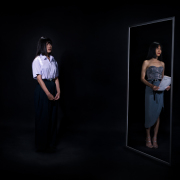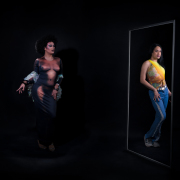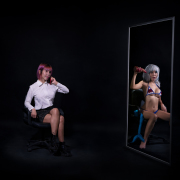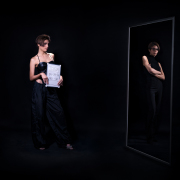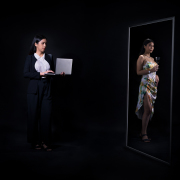A dozen Thai transgender women were invited to answer two questions: “who are you in the eyes of the
world?" and "who are you deep down?"
Then placed in front of a mirror, the left part (the image) illustrates the answer to the first question, while the right part (the reflection), through a montage, displays the answer to the second
one.
The exchange with these people, sometimes over months, and the story they agreed to tell dictated the choices composing the final photograph.
By inviting the subjects to share their experience in front of their reflection, the viewers are also encouraged to contemplate themselves in a metaphorical mirror to face the own prejudices they may
have. The goal is not to make claims or judgment though but to stimulate thought. The use of the frequently used but often pejorative title “Ladyboys” aims at that too.
Une douzaine de femmes transgenres Thaïlandaises furent invitées à répondre à deux questions :
« qui es-tu aux yeux du monde ? » et « qui es-tu au fond de toi ? ».
Placées ensuite face à un miroir, la partie de gauche (l’image) illustre la réponse à la première question, tandis que la partie de droite (le reflet), par un montage, illustre la réponse à la seconde.
C’est l’échange avec ces personnes, parfois sur plusieurs mois, et l’histoire qu’elles ont accepté de raconter qui ont dicté les choix composant la photographie finale.
En invitant les sujets à partager leur expérience face à leur reflet, le spectateur est également incité à se contempler dans un miroir métaphorique pour faire face aux propres préjugés qu’il pourrait avoir. Cependant, l’objectif n’est pas de porter des revendications ou un jugement mais de stimuler la réflexion. L’utilisation du titre « Ladyboys », un terme fréquemment utilisé mais à connotation souvent péjorative, poursuit ce même but.

